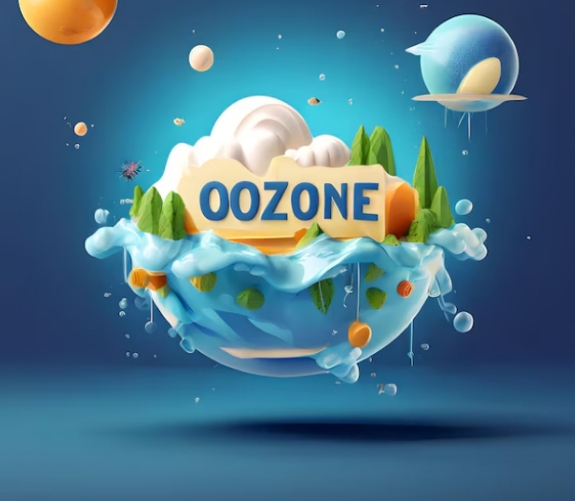 Understanding the Ozone Layer (Definition, Importance, and Depletion)
Understanding the Ozone Layer (Definition, Importance, and Depletion)
The ozone layer is a crucial component of Earth’s atmosphere. This layer, situated in the stratosphere, absorbs the majority of the Sun’s harmful ultraviolet (UV) radiation. By protecting the planet from excessive UV rays, it plays a vital role in safeguarding all forms of life. To grasp the significance of this layer, it is important to understand what the ozone layer is and how its depletion affects our environment.
What is the Ozone Layer?
The ozone layer is a region within the stratosphere, located about 10 to 30 miles above Earth’s surface. It contains a high concentration of ozone (O3) molecules, which are crucial for absorbing and filtering ultraviolet radiation from the Sun. This protection helps prevent an increase in skin cancers, cataracts, and other health issues among humans. Additionally, it shields terrestrial and aquatic ecosystems, ensuring the stability of the environment.
 Ozone Layer Definition
Ozone Layer Definition
In simple terms, the ozone layer can be defined as a part of Earth’s atmosphere where ozone molecules are concentrated. These molecules form a thin, protective shield that absorbs the majority of the Sun’s UV radiation. Without this shield, the intensity of UV radiation reaching the Earth would increase significantly, leading to severe environmental and health problems. The layer’s role is thus fundamental to maintaining life on our planet.
 The Importance of the Ozone Layer
The Importance of the Ozone Layer
The ozone layer’s significance extends beyond human health. It influences climate patterns and supports ecosystems by controlling the amount of UV radiation that reaches Earth’s surface. Plants, which are the foundation of most food chains, rely on moderate UV levels for proper growth and development. Aquatic life, including phytoplankton, also depends on the layer to prevent harmful UV radiation from penetrating the oceans.
Ozone Layer Depletion
Ozone layer depletion refers to the thinning of the layer due to various human activities. This phenomenon was first observed in the 1980s and has been a major environmental concern since then. The primary cause of layer depletion is the release of chlorofluorocarbons (CFCs) and other ozone-depleting substances (ODS) into the atmosphere. These chemicals, once widely used in refrigerants, solvents, and aerosols, gradually break down ozone molecules, thinning the protective layer.
The process of depletion has led to the formation of the “ozone hole,” particularly over Antarctica. During the Southern Hemisphere’s spring, the ozone concentration in this region significantly drops. The consequences of this depletion are far-reaching, affecting both climate and health. Increased UV radiation reaching the Earth’s surface can lead to a rise in skin cancer rates, cataracts, and other health problems. Furthermore, it can disrupt ecosystems, impacting plant growth and aquatic life.
Global Response to Ozone Layer Depletion
Addressing ozone layer depletion has become a global priority. The 1987 Montreal Protocol was a landmark international agreement designed to phase out the use of ozone-depleting substances. This protocol has been widely successful, leading to significant reductions in the emissions of CFCs and other harmful chemicals. As a result, the layer is on a path to recovery, with projections indicating that it could return to its pre-1980 levels by mid-century.
Efforts to protect the layer continue through various means, including the promotion of the substances and technologies that do not harm the layer. Public awareness campaigns also play a crucial role in educating people about the importance of protecting the ozone layer and encouraging responsible practices.
Future Outlook
While significant progress has been made, ongoing vigilance is necessary to ensure the full recovery of the layer. Continued monitoring of the layer and atmospheric conditions is essential to track the effectiveness of international agreements and policies. Additionally, emerging concerns about other substances that may affect the layer require attention and action.
In conclusion, understanding what the layer is and its role in protecting our planet is fundamental. The depletion of this layer, caused primarily by human activities, poses serious threats to both health and the environment. However, global efforts such as the Montreal Protocol have demonstrated that collective action can lead to positive outcomes. Moving forward, continued commitment to protecting the layer is crucial for ensuring a stable and healthy environment for future generations.

2 thoughts on “Ozone layer”